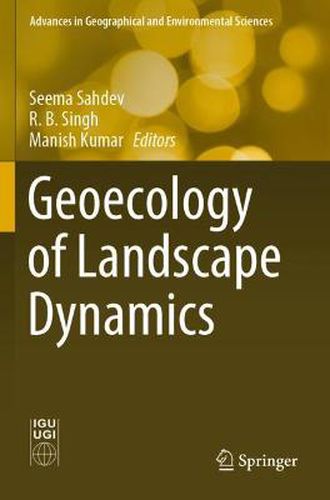Readings Newsletter
Become a Readings Member to make your shopping experience even easier.
Sign in or sign up for free!
You’re not far away from qualifying for FREE standard shipping within Australia
You’ve qualified for FREE standard shipping within Australia
The cart is loading…






This title is printed to order. This book may have been self-published. If so, we cannot guarantee the quality of the content. In the main most books will have gone through the editing process however some may not. We therefore suggest that you be aware of this before ordering this book. If in doubt check either the author or publisher’s details as we are unable to accept any returns unless they are faulty. Please contact us if you have any questions.
This book provides an overview of the ecological indicators of landscape dynamics in the context of geographical landscape integration. Landscape dynamics depicts every change that occurs in the physical, biological, and cognitive assets of a landscape. To understand and interpret the complex physical, biological, and cognitive phenomena of landscapes, it is necessary to operate conceptually and practically on a broad range of spatial and temporal scales. Rapid land use changes have become a concern to environmentalists and planners because of their impacts on the natural ecosystem, which further determines socioeconomic dynamics. In this regard, the book discusses case studies that share new insights into how landscape patterns and processes impact small creatures, and how small creatures in turn influence landscape structure and composition.
In turn, the relevant aspects of land use and land cover dynamics are covered, and the multi-faceted relationship between the substrata and ecological community is highlighted. The book is unique in its focus on the application of spatial informatics such as automatic building extraction from high-resolution imagery; a soil resource inventory for meeting the challenges of land degradation; hydrological modeling; the temporal variation analysis of glacier area and the identification and mapping of glacial lakes; morphometric analysis of river basins; and the monitoring and modeling of urban sprawl, among other features.
$9.00 standard shipping within Australia
FREE standard shipping within Australia for orders over $100.00
Express & International shipping calculated at checkout
This title is printed to order. This book may have been self-published. If so, we cannot guarantee the quality of the content. In the main most books will have gone through the editing process however some may not. We therefore suggest that you be aware of this before ordering this book. If in doubt check either the author or publisher’s details as we are unable to accept any returns unless they are faulty. Please contact us if you have any questions.
This book provides an overview of the ecological indicators of landscape dynamics in the context of geographical landscape integration. Landscape dynamics depicts every change that occurs in the physical, biological, and cognitive assets of a landscape. To understand and interpret the complex physical, biological, and cognitive phenomena of landscapes, it is necessary to operate conceptually and practically on a broad range of spatial and temporal scales. Rapid land use changes have become a concern to environmentalists and planners because of their impacts on the natural ecosystem, which further determines socioeconomic dynamics. In this regard, the book discusses case studies that share new insights into how landscape patterns and processes impact small creatures, and how small creatures in turn influence landscape structure and composition.
In turn, the relevant aspects of land use and land cover dynamics are covered, and the multi-faceted relationship between the substrata and ecological community is highlighted. The book is unique in its focus on the application of spatial informatics such as automatic building extraction from high-resolution imagery; a soil resource inventory for meeting the challenges of land degradation; hydrological modeling; the temporal variation analysis of glacier area and the identification and mapping of glacial lakes; morphometric analysis of river basins; and the monitoring and modeling of urban sprawl, among other features.